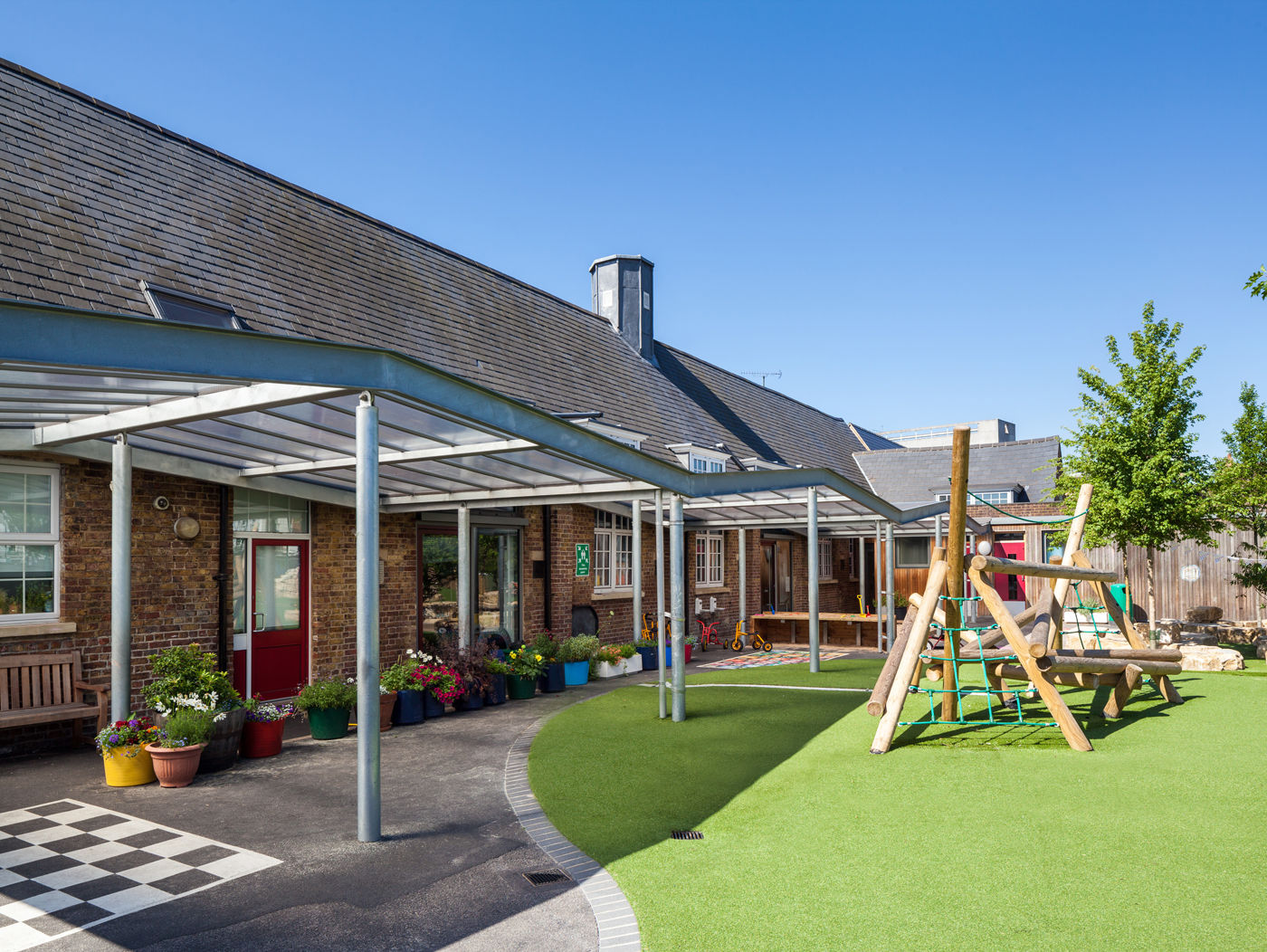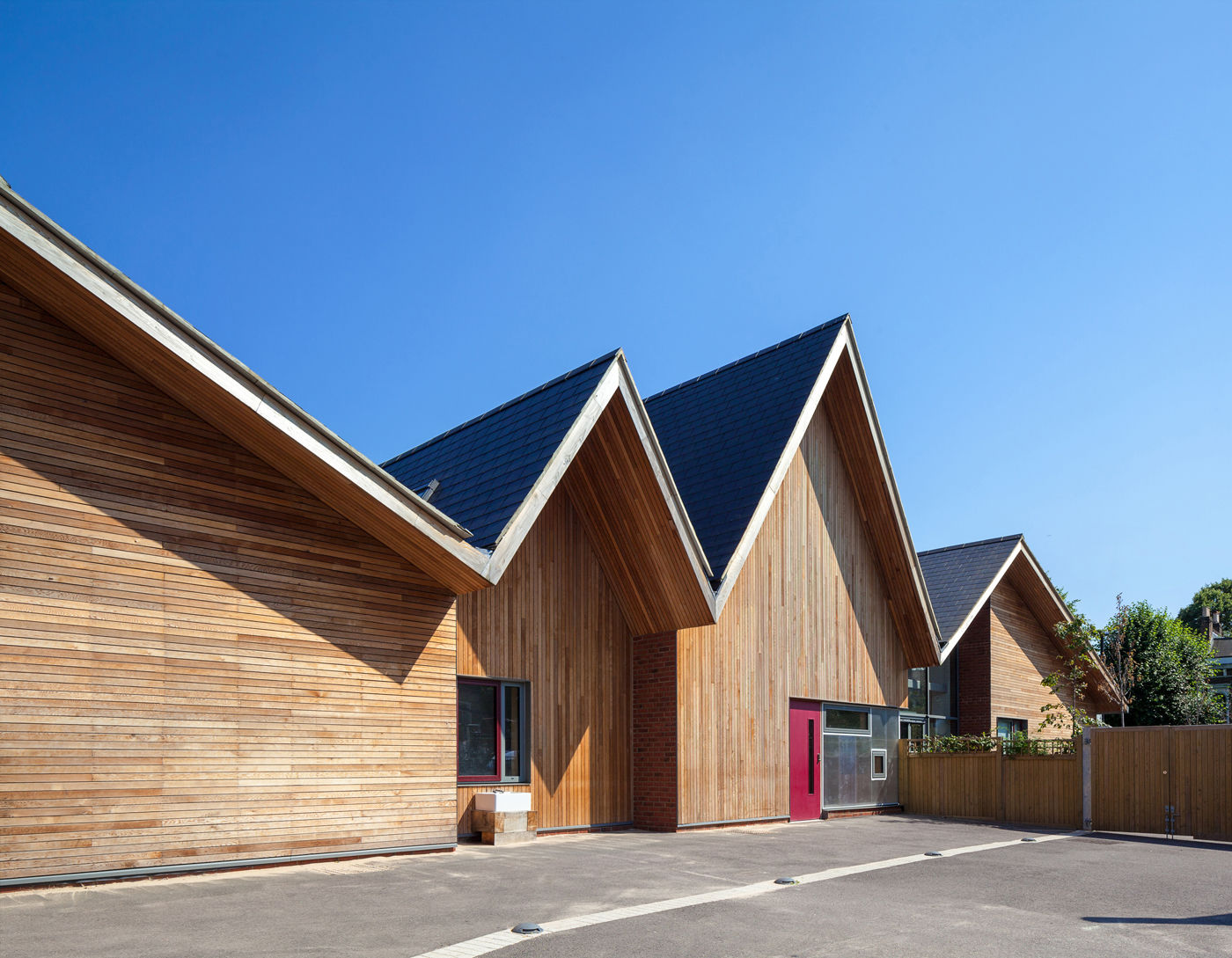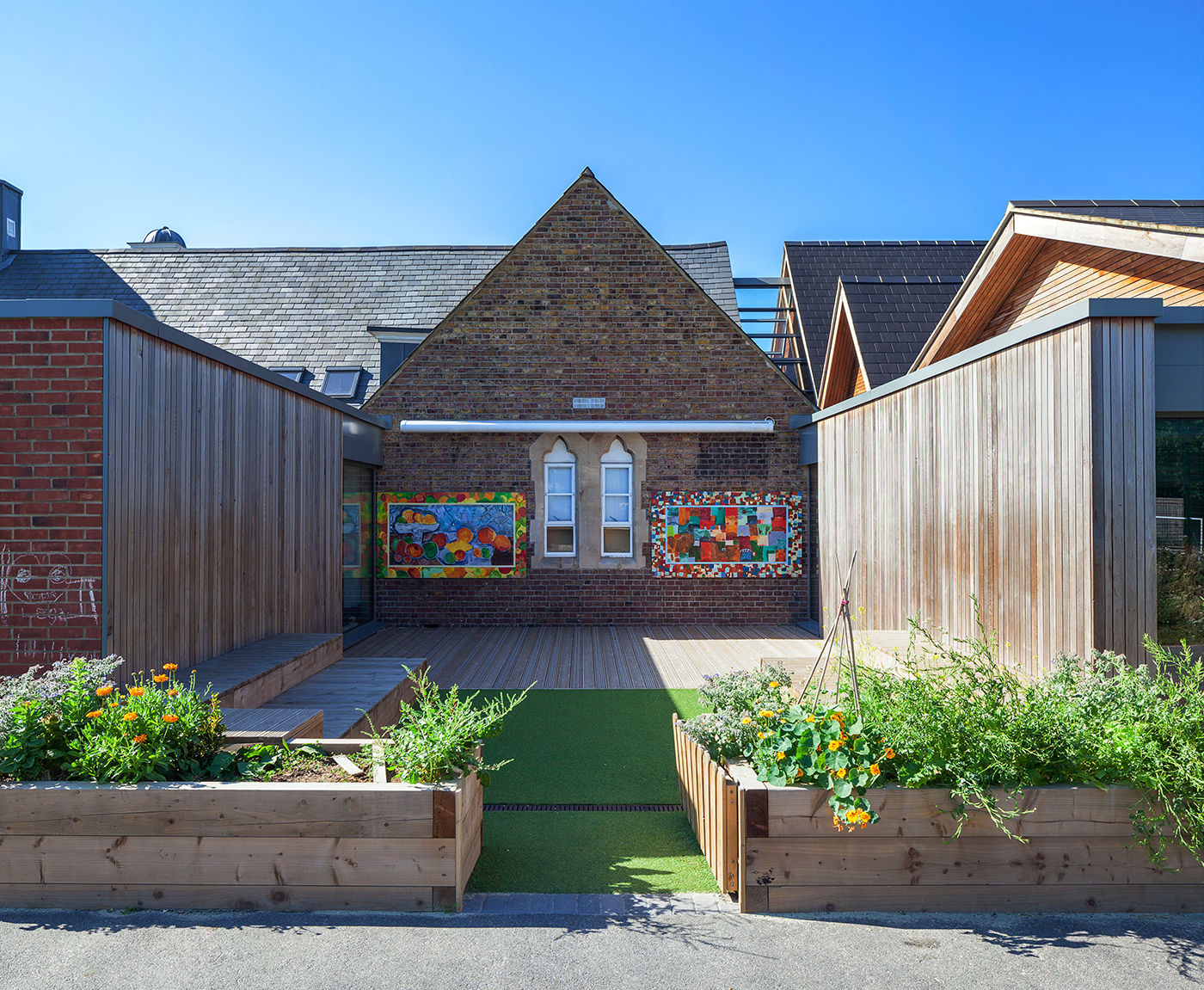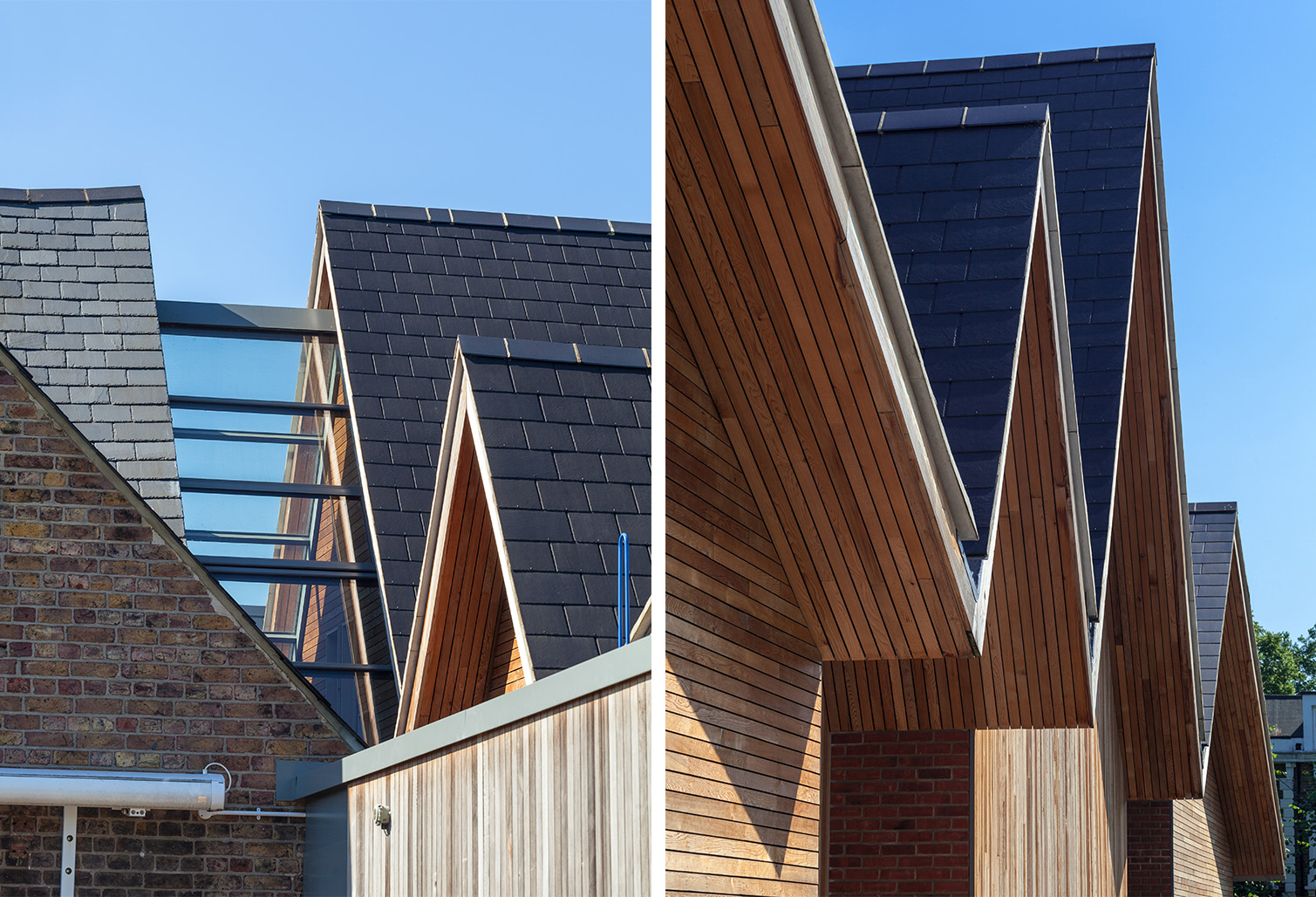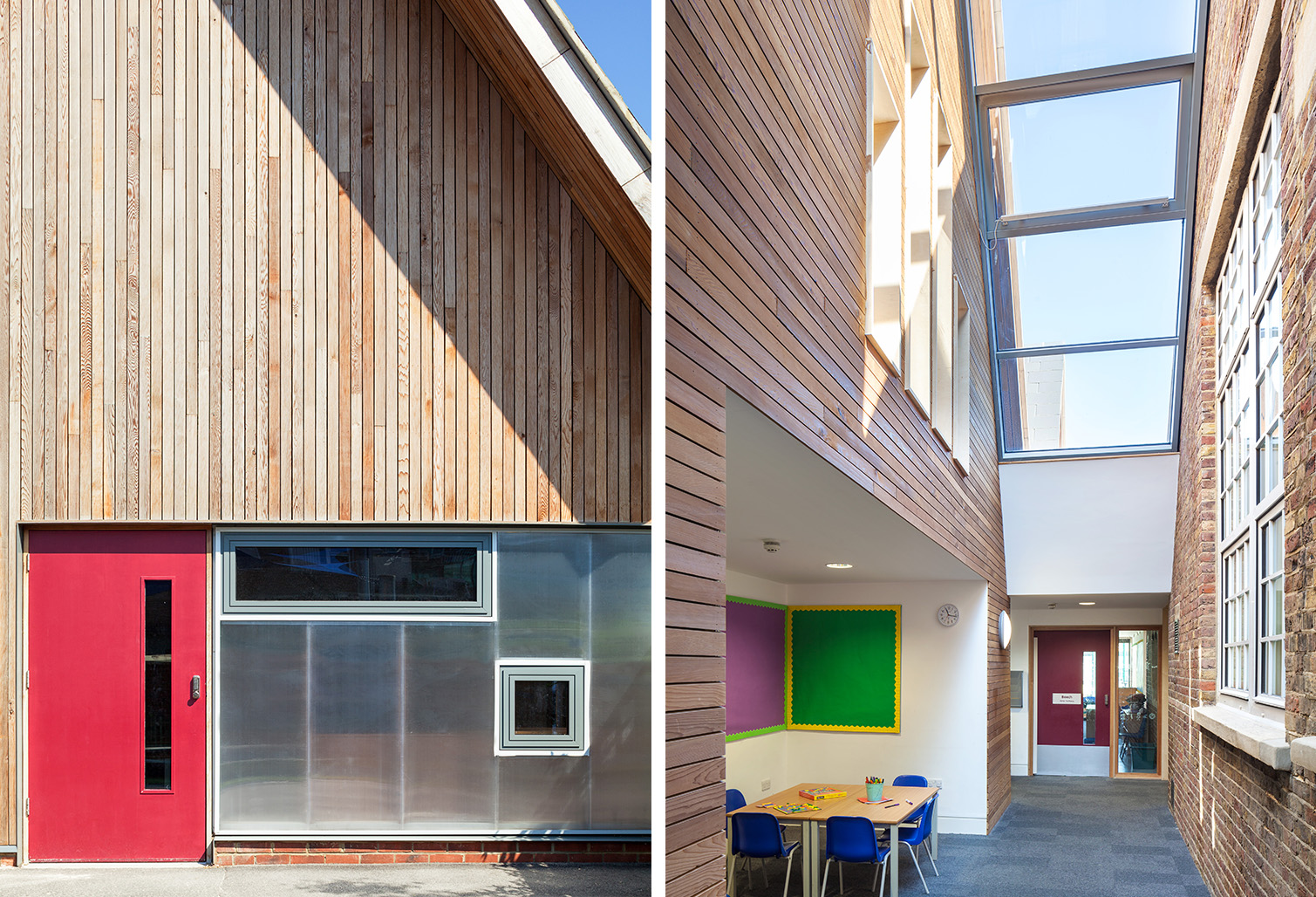The approach to the design respects the existing Victorian brick building by replicating similar forms and by using traditional materials but reinventing it all in a contemporary way. Extra care was taken to bring the new and the old building together sensitively; glazing was sensitively integrated to mark the line of separation which also brings natural daylight into the plan and a series of new pitch roofs with a strong continuous rhythm were introduced over the new extension with the highest new pitch matching the existing Victorian building pitch height to achieve a sense of continuity. The existing spaces within the school were re-organised alongside the provision of the new accommodation to provide a clear clustering strategy to all year groups and to offer increased clarity to the school layout. This addressed the critical issues with the existing school design including back log maintenance and also allowed for clear age progression, generous circulation and improved environmental conditions to all class bases. The key stages were grouped into clusters with associated group rooms, cloakroom areas, toilets, storage and mobility equipment storage.
Age appropriate furniture for kitchen areas, cloakrooms and storage units was built into each teaching space and was constructed predominately with birch faced plywood. The windows and doors are framed with the same birch faced plywood to achieve a consistent language which helps to bring the whole school building together while retaining the unique characteristics of each building period.
Photographs by Simon Kennedy
